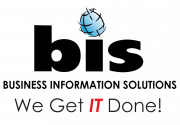In today’s digital age, technology plays a critical role in almost every aspect of an organization. However, managing that technology can be overwhelming, especially for small and medium-sized businesses without the staff or expertise. To ensure that your business stays ahead of the competition and your technology remains efficient, it’s essential to create a technology roadmap.
What Is a Technology Roadmap?
A technology roadmap is a strategic plan (or map) that outlines how your company intends to use technology to achieve its business goals.
Here are 5 steps to creating an effective technology roadmap:
#1: Know your technology assets
Before creating a technology roadmap, you need a clear understanding of your technology assets. These assets may include hardware, software, data and networks.
Start off by conducting a comprehensive technology audit. It will help identify all assets you have in your business, their age and their current performance.
#2: Focus on data protection
Where is your data? Who has the rights to it? How much is it worth? Is it backed up? Every organization should be able to answer those questions about data so that they can protect it. Otherwise, they may fall victim to a data breach. From financial loss to reputation damage, data breaches have such a significant impact on an organization.
To effectively protect data, you should create your technology roadmap with data protection in mind at every step. In fact, every company should have a robust data protection strategy that includes regular backups, encryption, firewalls and antivirus software.
#3: Ensure assets are managed securely
Now that you have identified your assets and data, it’s time to ensure they’re being properly managed, an integral part of your technology roadmap. This means that you should have policies and procedures in place like a baseline security installation setup for computers or a plan for managing end-of-life technology assets. Don’t forget about alerting!
#4: Establish processes to oversee accounts
Account management and authentication are critical for securing your business from insider threats and hackers. There should be a policy that governs how user accounts are created, managed and removed. An inventory of accounts should be established and maintained over time. It should list all privileged accounts, dormants accounts and unique passwords.
You should also implement two-factor authentication to increase security.
#5: Keep a close eye on access
Access control management is essential for ensuring that users have access only to the data and systems they need to do their jobs. Once again, there should be another policy that governs user privileges and access control. It should include processes and tools for creating, assigning, managing and revoking access credentials and privileges for software, network and physical accounts.
Remember to regularly review and update your technology roadmap to ensure that it remains relevant and effective as technology evolves.
Book a Time to Discuss Technology Roadmapping for Your Business
If you don’t have a technology roadmap in place, then it’s time to get one! You can book a complimentary, one-on-one with Phillip to discuss technology roadmapping. Just select a date and time from his calendar below.
ADDITIONAL RESOURCES

Phillip Long – CISSP, CEO of , along with his team of marketing and information technology experts, will walk you through an overview of what your business should be doing to protect your data and plan your digital marketing strategies.
You may reach out to us at:
Phone: 251-405-2555
Email: support@askbis.com











